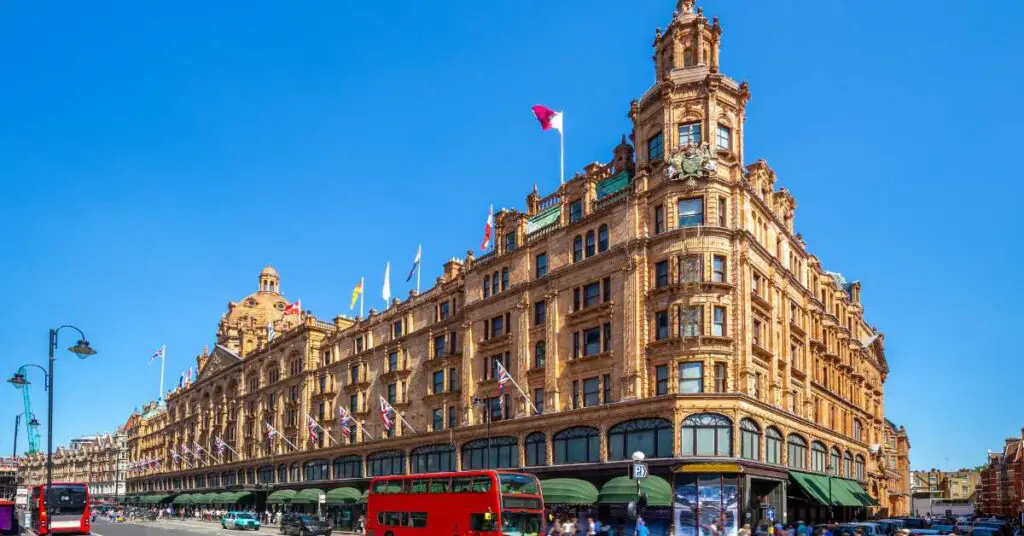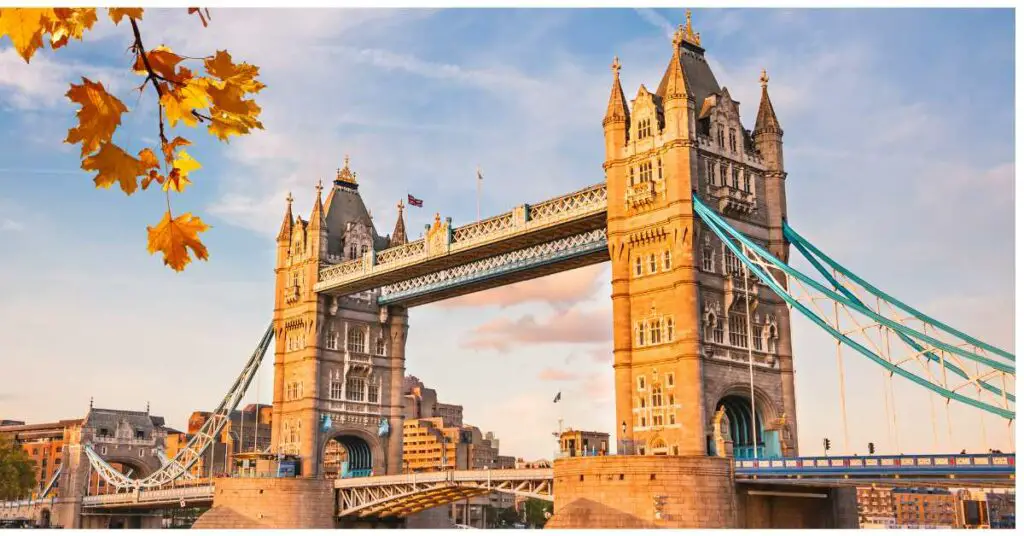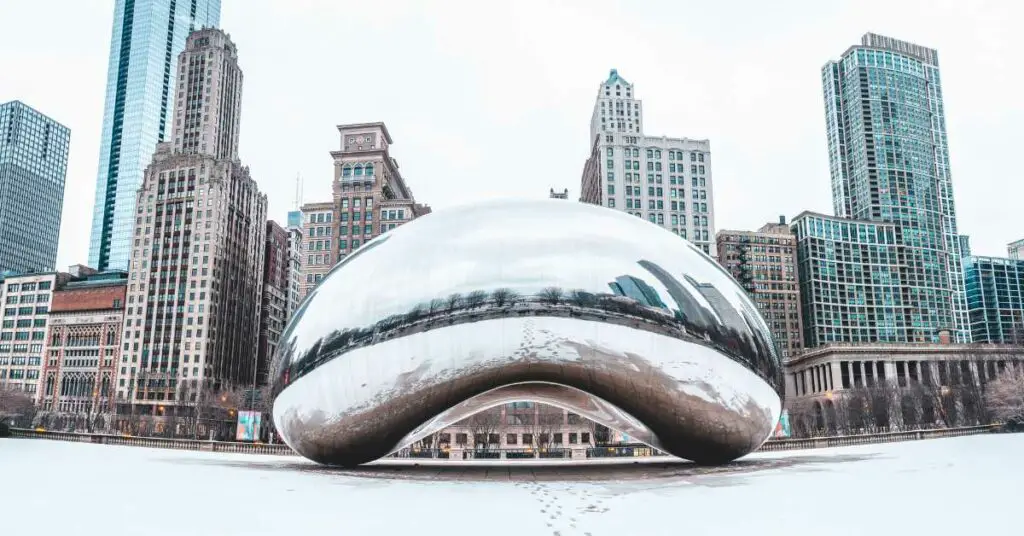Hey there, tea enthusiasts and curious minds! Picture this: a world of delicate teacups, scones that are fancier than your regular Wednesday, and an air of sophistication that even your pet goldfish would envy.
But wait a minute—is high tea exclusively a ladies-only soirée? Well, grab your monocles and suspenders, because we’re about to stir the teapot of tradition and pour out some truths.
No, high tea is not only for ladies. It is a tradition that anyone can enjoy, regardless of gender. Modern high tea events are inclusive and welcoming to everyone, offering an opportunity to savor delightful treats and engage in meaningful conversations.
Contrary to popular belief, high tea isn’t some secret society where men are left sipping from the punchbowl while ladies flaunt their pinkies. Join me as we unravel the tangled history of high tea, debunk a few stereotypes with a dash of wit, and explore how this grand tradition is anything but gender-exclusive.
Get ready to clink teacups with history, humor, and a sprinkle of debunked myths – because when it comes to high tea, we’re breaking saucers and barriers!
So, dear reader, whether you’re a lady, agent, or a mystical tea-loving creature, fasten your seatbelts (or bonnets) because high tea is about to spill its secrets. Let’s sip, savor, and settle the score once and for all! 🍵🕶️
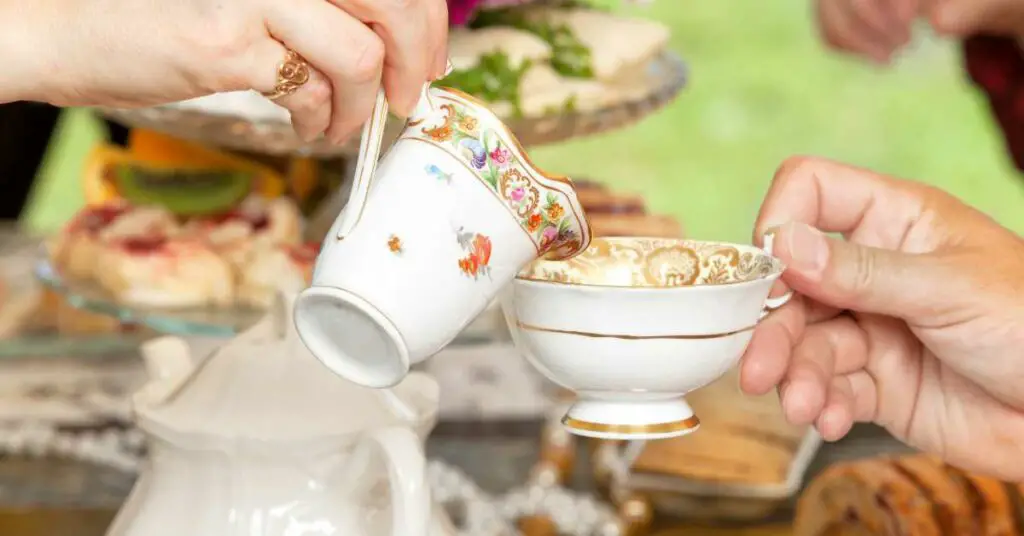
The Birth of High Tea
High tea didn’t sprout from an afternoon tea garden; instead, it emerged from the heart of working-class British households in the 18th century. As laborers returned home, famished from their day’s toil, they sought more than the delicate finger foods of afternoon tea.
High tea wasn’t about delicate porcelain and dainty bites; it was a robust repast, a fusion of sustenance and comfort. Picture families gathered around the table, sharing hearty fare like meat pies, bread, and cheese.
Is High Tea Only for Ladies?
Ah, the age-old assumption that high tea is a feminine fete, fit only for the fairer sex. But hold onto your crumpets, because it’s time to shatter that saucer-sized misconception. While high tea might have had a reputation for being a ladies’ domain, it’s about as true as thinking unicorns only graze on rainbows.
Let’s rewind the tape to the roots of high tea. Back in the 18th and 19th centuries, this tradition wasn’t all about dainty lace doilies and flowery hats.
It emerged as a hearty reprieve for the working class, a substantial evening meal featuring hearty dishes like meat pies, bread, and cheese. And guess what? It wasn’t just ladies coming home from the mill who were indulging.
Fast forward to today, and high tea has metamorphosed into a glorious medley of flavors, styles, and, importantly, inclusivity.
Men have embraced this elegant experience with open arms, showing up in tweed suits, not afraid to nibble on delicate pastries or clink china with gusto.
From charming tea rooms to five-star hotels, high tea has become an all-gender affair, with a space for everyone to relish the art of conversation, fine tea, and delectable treats.
So, dear skeptics, next time you hear the rumor that high tea is a ladies-only zone, raise an eyebrow and raise your teacup. High tea is a table where everyone is invited to share in the grandeur, charm, and deliciousness, regardless of gender.
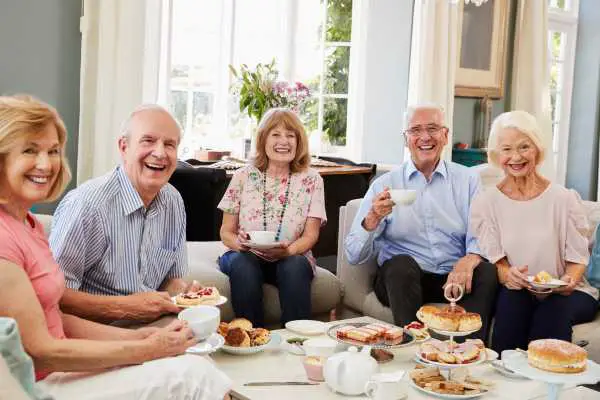
Misconceptions and Stereotypes: High Tea Unboxed
Ah, the tangled web of misconceptions and stereotypes! As we navigate the lush gardens of high tea culture, it’s impossible to ignore the thorny brambles of assumptions that have entwined themselves with this refined tradition.
Let’s unravel the threads and expose the truth behind the myth.
Breaking the Tea Cup Illusion
The notion that high tea is exclusively a ladies’ affair has clung to the teapot like a persistent tea stain. But like any good detective, let’s analyze the evidence. High tea’s origins, as we’ve seen, were rooted in practicality and sustenance, not gender-specific exclusivity.
However, somewhere along the way, this hearty spread got tangled in the web of societal perception, resulting in the belief that only those with a certain chromosome configuration are privy to its pleasures.
Sip by Sip: Society’s Role
Blame it on the societal spotlight that once focused on gender roles and their respective tea-drinking domains. In an era where propriety was paramount, the image of ladies delicately sipping tea while engaging in polite conversation was etched into the collective consciousness.
Meanwhile, men were cast as the lords of coffeehouses and more substantial meals. These rigid norms subtly whispered that certain rituals were off-limits to the “opposite” gender.
Stereotypes, like steeped tea leaves, often infuse cultural beliefs. High tea, caught in the crosshairs of historical norms, became a victim of this entanglement.
These stereotypes lingered even as time and perspectives evolved, leaving a legacy that was tough to dismantle.
However, fear not, for progress is brewing! With societal norms shedding their old leaves and new shoots sprouting, high tea is shaking off these antiquated constraints.
It’s no longer about gender but about enjoyment, camaraderie, and indulging in culinary delights. In the next section, we’ll lift the lid on how high tea has metamorphosed into a realm of all-inclusiveness, proving that the tea table welcomes everyone, regardless of gender or preconceived notions.
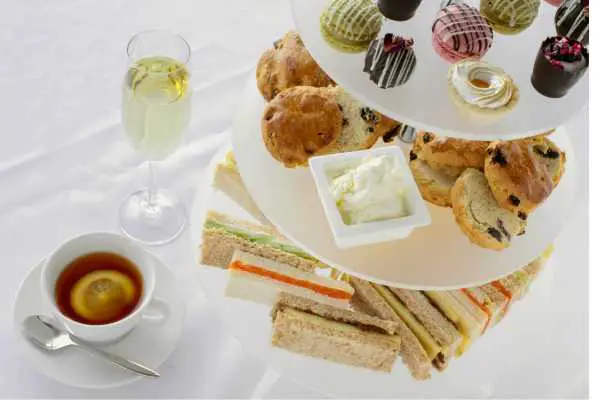
Historical Context: Gender Roles and High Tea
To fully grasp the interplay between high tea and gender, we must journey back to the days when societal norms cast long shadows and gender roles were etched in stone. In this section, we’ll immerse ourselves in the historical tapestry that wove together the fabric of gender expectations and high tea.
A Glimpse into Yesteryears
Picture the 18th and 19th centuries – a time when social order resembled a finely choreographed dance. Men and women occupied separate spheres, with distinct roles and expectations.
Men ventured into the public realm, earning a livelihood and engaging in affairs beyond the home. Women, on the other hand, were the gentle guardians of heart and family.
As the sun dipped below the horizon and the laborers returned home, the concept of high tea took shape. For working-class families, this evening meal served practical purposes: it quelled hunger, allowed families to reconnect, and gave a brief respite from the grind of daily life.
Amid these roles and responsibilities, the notion of high tea being tied to women exclusively was not a primary consideration.
The Cultural Crossroads of Perception
Yet, as cultural practices mingled with societal beliefs, the association between high tea and femininity took root. The “tea and sympathy” trope intertwined with prevailing gender roles, amplifying the idea that women were the embodiment of refinement and civility.
The growing divide between public and private domains further fanned the flames of this association, casting high tea as a manifestation of domestic elegance.
In this landscape, high tea’s hearty origins seemed to pale in comparison to the emerging narrative that linked it to the refined comportment expected of women. Tea became emblematic of grace, a canvas upon which genteel femininity was painted. The teacup, then, transformed from a vessel of sustenance into a symbol of idealized femininity, veiling its roots in practicality.
While high tea’s connection to gender was more nuanced than a simple binary, the association between the two took root and imprinted upon the pages of history.
In the modern era, these pages are being rewritten. High tea has transcended its historical confines, breaking free from the restraints of traditional gender roles and embracing a new era of inclusivity.
With our historical compass firmly in hand, we’ll explore how these narratives have evolved, how the perception of high tea as a gender-exclusive affair has been reimagined, and how a table once laden with stereotypes is now adorned with the flowers of change.
In the upcoming sections, we’ll uncover the diverse array of individuals who now gather around the high tea table, proving that its charms are for everyone to savor.
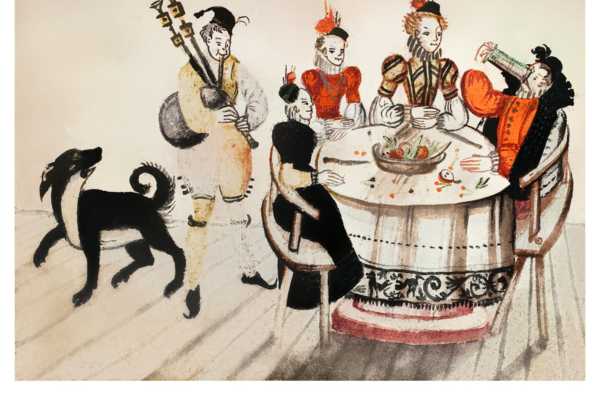
Men and High Tea: Breaking Stereotypes
The world of high tea is undergoing a delightful transformation, as gentlemen in tweed and ties elegantly sidestep outdated norms and boldly claim their spot at the table.
In this section, we’ll uncover the trailblazing men who are defying stereotypes, sipping fine teas, and leaving the notion of high tea as a ladies-only affair in the dust.
The Rise of Dapper Diners
Imagine a gentleman in a tailored suit and polished shoes, seated with poise at a table adorned with delicate china and delectable treats. This isn’t a scene from a Victorian novel; it’s the reality of modern high tea.
Men from all walks of life are embracing the pleasures of this centuries-old tradition, proving that the appeal of dainty sandwiches and exquisite teas is not confined to any gender.
From celebrities to everyday individuals, men around the world are participating in high tea events, and their reasons are as diverse as their backgrounds. Some attend to appreciate the artistry of the culinary creations, while others seek a relaxed atmosphere to bond with friends or indulge in a romantic rendezvous.
Regardless of motive, their presence unequivocally erases the notion that high tea is a realm reserved for one gender.
A Tipping Point for Tradition
Societal perceptions are shifting faster than milk swirling into a cup of Earl Grey. The stereotype that men should only enjoy hearty meals in gruff settings is giving way to a more inclusive narrative.
This transformation is driven by a desire for authenticity and a yearning to shed confining roles. As conversations around gender stereotypes evolve, so does the appreciation for experiences like high tea.
High-end hotels and quirky tea houses are responding to this shift by designing events that cater to all genders. Themes and menus are carefully curated to celebrate the diversity of tastes and preferences that attendees bring to the table.
High tea, once characterized by its exclusivity, is now celebrated for its inclusivity, embracing men and women alike in its warm embrace.
A New Chapter of Inclusivity
As societal landscapes shift, high tea is becoming a symbol of equality. Men participating in high tea events are not just enjoying a delightful spread; they’re rewriting narratives, demonstrating that enjoyment knows no gender bounds.
They’re savoring the elegance, the camaraderie, and the exquisite flavors that have captivated tea lovers for centuries.
So, let’s raise our teacups to these modern gentlemen, whose presence at the high tea table isn’t just a sip but a statement. As the pages of history turn, the stereotype that high tea is only for ladies’ fades into insignificance.
The tea table is now a gathering place for everyone, united by a love for tradition, a thirst for innovation, and a taste for the extraordinary.
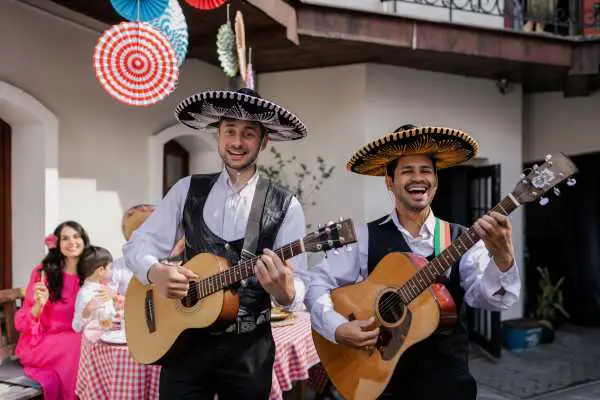
Benefits of High Tea for Everyone: Sipping Inclusivity
High tea isn’t just a culinary event; it’s a multisensory journey that transcends gender, inviting all who relish delightful experiences and cherish the art of connection.
In this section, we’ll uncover the bouquet of benefits that high tea offers, from fostering connections to tantalizing taste buds, and how these perks are accessible to everyone.
The Pleasures of Palate and Palaver
Imagine a scenario: friends and strangers alike gathered around a beautifully set table, a symphony of clinking teacups and shared laughter in the air.
High tea, it seems, is a master conductor of camaraderie. Regardless of gender, attendees are drawn into conversations that blossom like freshly brewed tea, fostering connections that transcend societal labels.
The relaxed ambiance of high tea cultivates an environment ripe for interaction. Networking becomes second nature as scones and pastries become the catalysts for discussions ranging from fashion to finance.
This charming setting encourages genuine interactions, leaving guests with not just a full stomach but also hearts warmed by shared stories and perspectives.
Sip and Savor: A Feast for the Senses
Picture a three-tiered stand laden with an assortment of treats: delicate sandwiches, buttery scones, and miniature desserts that look like works of art.
High tea isn’t just about taste; it’s about a visual and olfactory feast. Each bite is a harmonious marriage of flavors and textures, appealing to both adventurous and traditional palates.
But the indulgence doesn’t stop at food. The variety of teas available at high tea events is a celebration of cultures and tastes. From classic Earl Grey to exotic blends, each sip transports you to a world of flavors.
The experience is a sensory odyssey, an exploration of aroma and taste that bridges gaps and transcends gender distinctions.
Unwinding Elegantly
The modern world moves at a frenetic pace, leaving little room for moments of respite. High tea offers an elegant escape, a pause button for life’s hustle. Regardless of gender, attendees are enveloped in an ambiance of relaxation and sophistication, where time slows down and conversations flow like the tea itself.
The setting encourages mindfulness, allowing guests to savor each moment and every bite. It’s an opportunity to unplug from screens, connect with fellow attendees, and relish the present. The act of engaging in high tea becomes an act of self-care, offering a serene break from the chaos of everyday life.
In essence, the benefits of high tea extend far beyond the teacup. They’re about embracing tradition, celebrating inclusivity, and delighting in the finer things in life. Whether you’re a lady, a gentleman, or somewhere in between, high tea promises an experience that tantalizes taste buds, nurtures connections, and uplifts the spirit.
So, dear reader, as we sip our cups of possibility, let’s raise them to the harmonious symphony that is high tea, a chorus where everyone’s voice is heard and everyone’s appetite is satisfied.
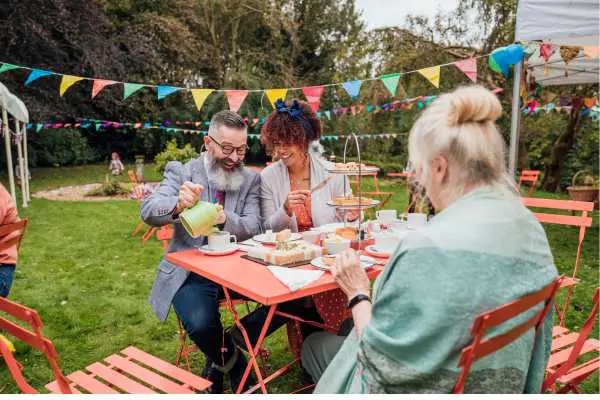
Conclusion: The Inclusive Charm of High Tea
In our exploration, we debunked the notion that high tea is solely for ladies. We unveiled its origins, dispelling stereotypes of exclusivity. Historical gender roles once influenced perception, but the modern era paints a different picture. Men now relish high tea, breaking barriers and biases.
High tea is shedding old conceptions, embracing all genders. It’s a rendezvous of tastes and tales, where networking mingles with relaxation. The tea table no longer segregates by gender; it unites through shared moments and flavors.
As the tea cups clink and laughter echoes, high tea’s evolution into an inclusive experience is undeniable. A realm once confined is now a realm redefined. In this refined world, the only distinction is between those who cherish tradition, camaraderie and a cup of tea.
Frequently Asked Questions
Can boys drink tea?
Absolutely! Tea is for everyone, regardless of gender. Boys can enjoy the delightful flavors and benefits of tea, just like anyone else. It’s a beverage that transcends stereotypes and offers a world of aromatic experiences to be savored by all.
What is tea boy?
“Tea boy” is a colloquial term that has been used to refer to someone, often a young person or an assistant, responsible for making and serving tea in an informal setting, such as an office or workplace.
However, the term may carry connotations of hierarchy or less favorable working conditions, and its usage can be seen as outdated or even disrespectful in modern contexts. It’s important to use respectful language when referring to individuals in any role
What is the opposite of high tea?
The opposite of “high tea” is often referred to as “low tea” or “afternoon tea.” While “high tea” historically referred to a more substantial working-class meal served later in the day, “afternoon tea” or “low tea” is a lighter and more refined ritual that involves tea, delicate finger sandwiches, scones, and pastries.
Afternoon tea is typically enjoyed in the late afternoon or early evening and is associated with elegance and leisure, whereas high tea was traditionally a more substantial meal served around dinner time.

